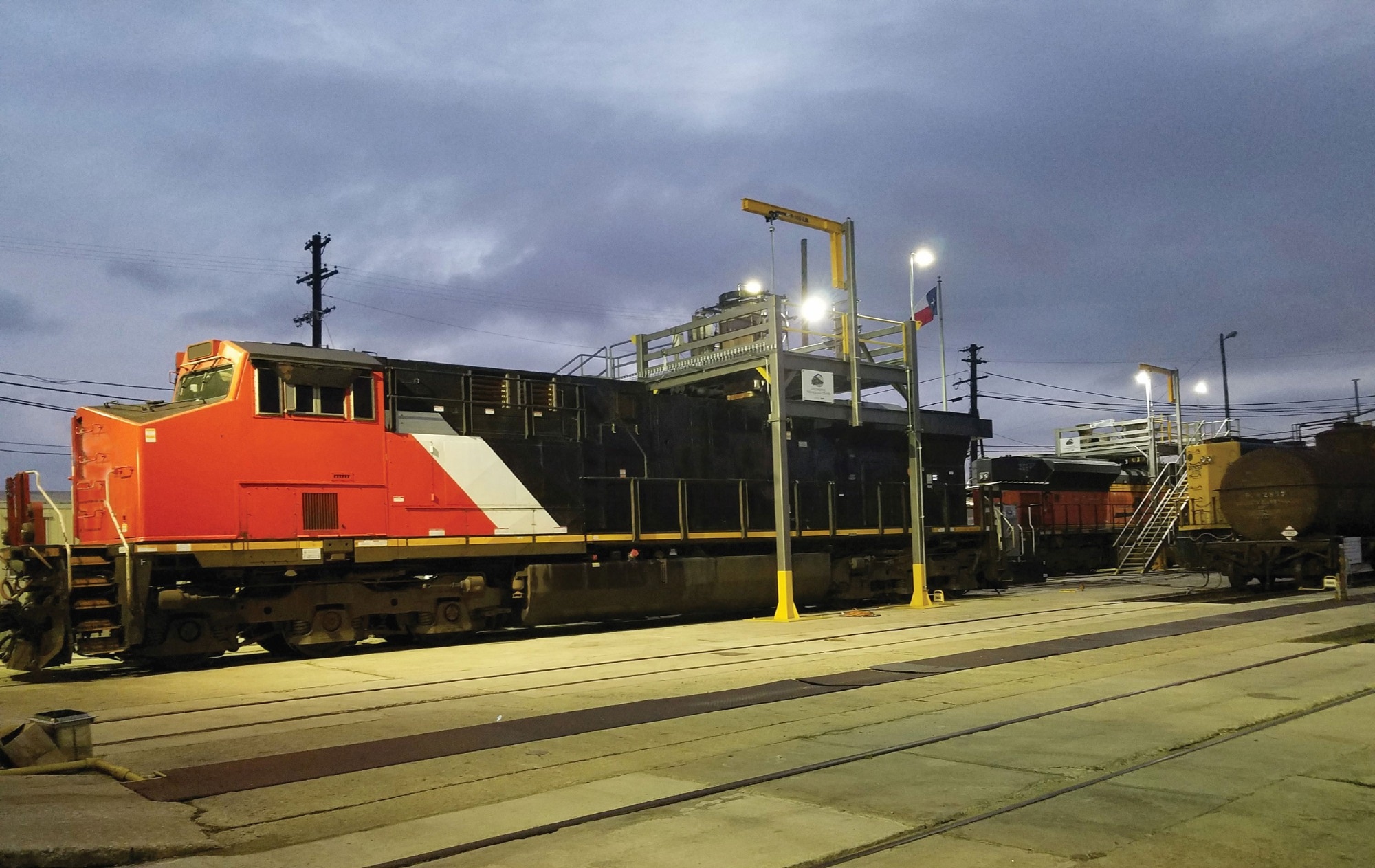Southwest Research Institute’s ALTRIOS open-source modeling and simulation software is assisting the freight rail industry in assessing potential decarbonization pathways. ALTRIOS, or the Advanced Locomotive Technology and Rail Infrastructure Optimization System, can simulate the real-world consequences and costs of implementing alternative energy locomotive technologies and broadening associated infrastructure.
 The SwRI Locomotive Technology Center provided an extensive collection of locomotive and railway data, simulation and modeling work, and locomotive battery testing expertise to support the ALTRIOS project. Image Credit: Southwest Research Institute
The SwRI Locomotive Technology Center provided an extensive collection of locomotive and railway data, simulation and modeling work, and locomotive battery testing expertise to support the ALTRIOS project. Image Credit: Southwest Research Institute
ALTRIOS, now publicly available for download, supports multiple simulation modes to provide rail industry stakeholders with ideal strategies for implementing GHG reduction technologies and attempting to make necessary infrastructure changes.
ALTRIOS integrates locomotive and energy storage technology modeling, as well as a sturdy suite of train dispatch and corridor simulations. It also has a high-level train scheduling and routing tool. It employs a physics-based simulation of individual trains and real-world rail infrastructure to examine the efficacy of various decarbonization technologies, such as biofuels, hydrogen, and batteries, among others, across the United States over decades.
The transportation sector in the United States accounts for one-third of the country's GHG emissions. The federal government announced earlier this year a plan to decarbonize the transportation sector by 2050.
The Class-I North American railroads have already committed to reducing their GHG emissions by setting science-based carbon reduction targets. Railroads are using fuel efficiency, renewable fuels, and alternate propulsion approaches to achieve the goal. ALTRIOS can cost-effectively assess locomotive decarbonization approaches using computer modeling to help them choose the right technologies for their needs.
Garrett Anderson, Lead Engineer, Powertrain Engineering Division, Southwest Research Institute
ALTRIOS was financially supported by the Advanced Research Projects Agency–Energy (ARPA-E) of the US Department of Energy as part of the LOCOMOTIVES (Lowering CO2: Models to Optimize Train Infrastructure, Vehicles, and Energy Storage) program. It received $1.5 million in funding.
SwRI collaborated with the National Renewable Energy Laboratory (NREL), the University of Texas at Austin, the University of Illinois Urbana-Champaign RailTec, and BNSF Railway to develop the software.
The SwRI Locomotive Technology Center helped the ALTRIOS project by contributing a large collection of locomotive power, efficiency, and fuel consumption data, providing assistance with simulation and modeling work, and contributing its expertise in locomotive battery testing.
For original equipment manufacturers and railroads, SwRI frequently conducts research, development, and evaluations on locomotive exhaust emission, alternative fuels, and engine technology. The work of SwRI also benefits the US Department of Transportation, the US Department of Energy, the California Air Resources Board, and the US Environmental Protection Agency.
Southwest Research Institute has extensive expertise in large-scale propulsion systems technologies and closely collaborated with BNSF Railway to test battery-electric locomotives in California. The SwRI team’s collaboration, knowledge, and extensive data processing and modeling helped us to make ALTRIOS the first fully validated, comprehensive model for rail decarbonization.
Jason Lustbader, National Renewable Energy Laboratory
Jason Lustbader guides NREL’s advanced vehicles and charging infrastructure research group.
Within the next 10 years, the largest freight railroads in North America want to cut GHG emissions by 40%. ALTRIOS is a tool made to address the particular issues facing the industry’s drive toward decarbonization, like propulsion power requirements, evaluating scheduling impacts, and addressing the infrastructure’s widely dispersed geographic location for fuel and energy supply. NREL claims that their researchers have already started to develop practical decarbonization strategies using ALTRIOS.
It will cost billions of dollars to upgrade existing rail infrastructure for decarbonization. With that much money on the line, we must carefully evaluate decarbonization proposals— to ensure they are efficiently and effectively implemented.
Steven Fritz, Lead, Locomotive Technology Center, Southwest Research Institute